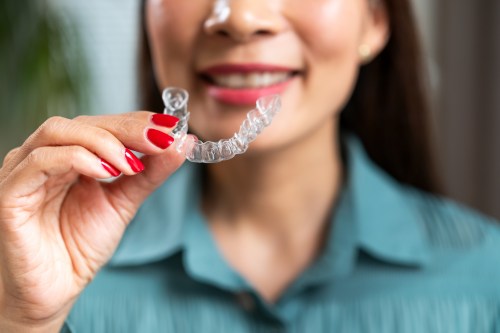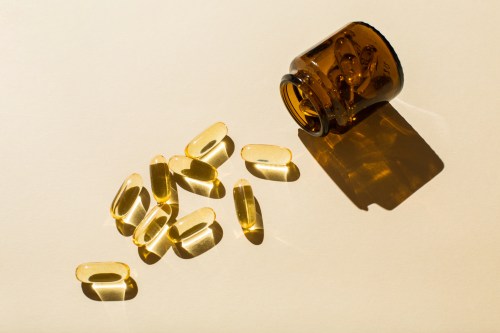Headaches are day ruiners that halt your big plans in their tracks—or at least make them difficult to flawlessly execute. As someone who gets many an angry migraine, I know that the pain forces me to pack it up for the day and retreat into my dark cave (AKA my bedroom with the shades drawn). But most days, we don’t have the time to sleep off a headache.
What’s a gal to do? While doctors maintain over-the-counter or prescription medications are most effective to relieve the tension headache or migraine itself, there are some home remedies worth taking a spin to quell symptoms and feel a bit better, fast. “Treating as early as possible is the best chance to get pain under control,” says Susan Broner, MD, medical director of the headache program at at Weill Cornell Medicine and New York-Presbyterian. She says home remedies can help get through an attack alone or in tandem with medication, so whip these fixes out sooner rather than later. And if your headaches are getting more frequent, more painful, or harder to treat, definitely talk with your doctor.
Okay, now grab a glass of water (hydration is important here, like in so many aspects of our lives!) and let’s get into what to keep in your arsenal of instant home remedies for headaches:
Essential oils
You’ll want to grab peppermint, lavender, and rosemary essential oils for their pain-busting properties. “It’s not just, ‘Oh it’s relaxing,’ or ‘it smells good,’” neurologist and headache specialist Sara Crystal, MD, says. “There is some evidence that [essential oils] play a role in desensitizing pain fibers involved in migraines and reducing inflammation.”
The active ingredient in peppermint oil is menthol, which has been found to help relieve headache pain. Dr. Crystal cites a small study where half of the people who used a topical menthol gel on their head and neck said their headache pain improved. Plus, it has a nice cooling effect.
Similarly, there’s evidence that breathing in lavender oil can reduce migraine pain, and rosemary oil has anti-inflammatory and anti-pain properties helpful in quelling pain. Dr. Crystal recommends putting a few drops of these oils onto a cold washcloth to use as a compress, or mix them with a carrier oil (like the ever-versatile coconut oil) and massage it into your forehead or temples.
As for inhaling the oils: Dr. Broner says aromatherapy’s ability to reduce headache intensity isn’t totally understood, but one thought is that “the olfactory system—the nerves that allow us to smell—has connections to one of the main migraine regulators deep inside the brain.” Smells like sweet relief.
Hot or cold compress
When you feel headache pain coming on, reach for a compress. Dr. Broner says holding a compress to your head might stimulate nerve endings on the face and scalp, which sends signals to the brain to temporarily turn pain down a notch. It comes down to personal preference whether you decide to go for a hot or cold compress, although Dr. Crystal says most people like it cold.
Ginger
A migraine attack brings on a long list of miserable symptoms, one of which is the dreaded stomach-turning nausea. Dr. Crystal says a cup of ginger tea (aka one of the best teas for headaches) can help keep this at bay. Ginger has anti-inflammatory properties, and some naturopathic doctors even recommend applying a ginger root paste to your forehead or between your eyebrows to help manage pain.
Supplements
A headache is a sign your body is out of whack. Taking supplements like vitamin B2 and coenzyme Q10 likely won’t stop pain in the moment, but taking them regularly can be a major force in preventing future attacks.
Another power player in reducing headache attacks and pain is magnesium. Dr. Crystal says many people who suffer from migraines are also deficient in magnesium. The nutrient helps control nerve and muscle function, and also works to reduce cortisol levels, a frequent headache trigger. A supplement can work wonders—be sure to talk with your doc before stocking up—as can magnesium-rich foods, like dark leafy greens (as long as these foods aren’t your migraine triggers!).
Caffeine
The familiar pangs of a headache rage make for a good excuse to brew coffee. “In general, coffee or caffeine helps acutely during a migraine attack, because it constricts the vessels in the head,” Dr. Crystal says. If you read labels on OTC meds like Excedrin, this caffeine remedy will sound familiar. But buyer beware: Too much caffeine can also contribute to rebound headaches. And no one wants to be back to square one.
Acupressure
This traditional Chinese medicine tactic helps to relieve pain by pressing certain places on your body. Dr. Broner says acupressure helps some people feel less pain, although it’s not known why it might work. There are a few spots to try to bid headaches farewell: between your thumb and index finger, between your pinkie toe and fourth toe, or between your eyebrows. For a mini facial massage, you can also try this 10-second trick said to relieve tension headaches.
A couple final rules of thumb for instant headache relief: Stay hydrated and stay chill (Dr. Broner suggests deep abdominal breathing techniques). Remember to use these remedies at the start of your tension headache or migraine, before the intensity goes off the rails and you have no choice but to wait it out or take medication. And now? It’s time to take back your day.
You might also be able to find headache relief in the kitchen—here are 6 foods and drinks to ease your pain. And if your headaches always strike after you exercise, here’s how to deal.
Sign Up for Our Daily Newsletter
Get all the latest in wellness, trends, food, fitness, beauty, and more delivered right to your inbox.
Got it, you've been added to our email list.











